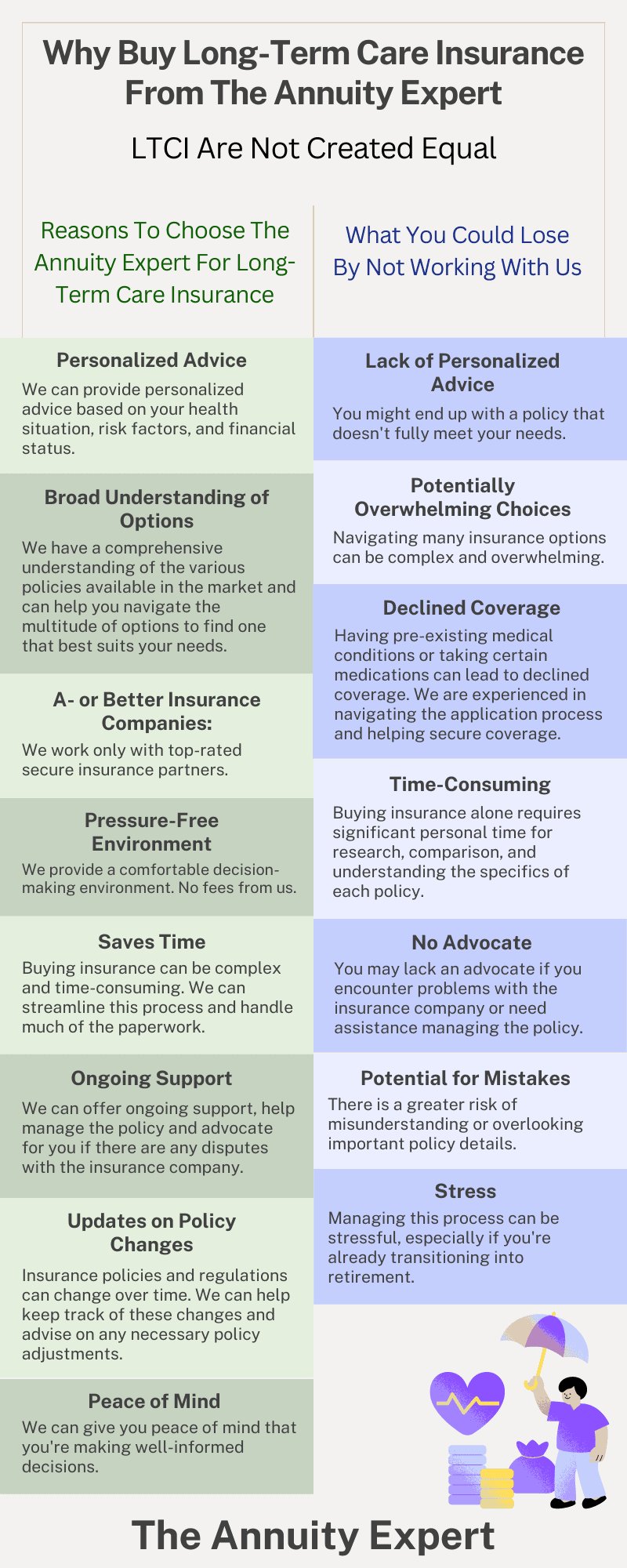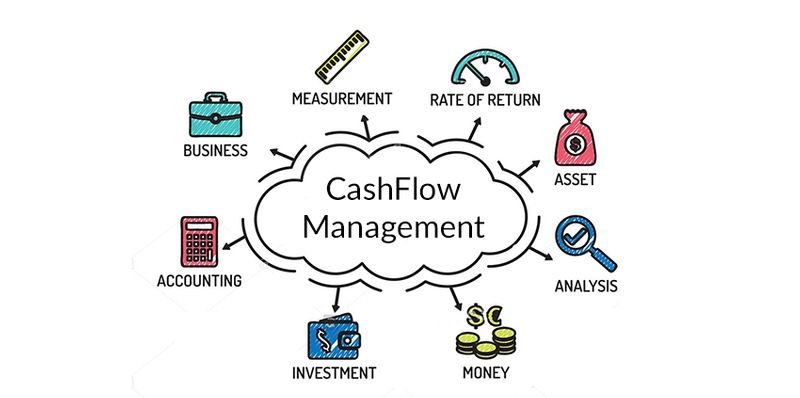Long-term care insurance is a complex topic that can often leave individuals feeling overwhelmed and uncertain about how to navigate it. But fear not! In this guide to understanding long-term care insurance, we will break down the intricacies of this type of coverage and provide you with all the information you need to make informed decisions. Whether you’re curious about the benefits, costs, or eligibility requirements, we’ve got you covered. So, if you’ve ever found yourself baffled by long-term care insurance, look no further! Let’s dive in and demystify this crucial aspect of financial planning.
Guide to Understanding Long-Term Care Insurance
Long-term care insurance is an important aspect of financial planning that many individuals tend to overlook. As we age, the likelihood of needing long-term care increases, making it crucial to have a comprehensive understanding of long-term care insurance and its benefits. In this guide, we will delve into the key aspects of long-term care insurance, including what it is, how it works, and factors to consider when choosing a policy. By the end, you will be equipped with the knowledge to make informed decisions about long-term care insurance that align with your needs and financial goals.
What is Long-Term Care Insurance?
Long-term care insurance is a type of insurance policy that helps cover the costs associated with long-term care services and support. These services can include assistance with daily activities, such as bathing, dressing, eating, and mobility, either in a nursing home or in your own home. Long-term care insurance policies provide coverage for a specific period or until a predetermined maximum benefit is reached.
Why is Long-Term Care Insurance Important?
Long-term care services can be expensive, and the costs are not typically covered by traditional health insurance or Medicare. By having long-term care insurance, you can protect your savings and assets from being depleted by the high costs of long-term care. It also provides you with the flexibility and freedom to choose the type of care you want without solely relying on government-funded programs.
How Does Long-Term Care Insurance Work?
Understanding how long-term care insurance works is essential to ensure you select the right policy for your needs. Here’s a breakdown of the key components of long-term care insurance:
1. Eligibility and Benefit Triggers
To activate your long-term care insurance benefits, you must meet certain eligibility criteria and satisfy specific benefit triggers as outlined in your policy. Common benefit triggers may include needing assistance with two or more activities of daily living (ADLs) or being diagnosed with a cognitive impairment, such as Alzheimer’s disease.
2. Coverage Options
Long-term care insurance policies offer a range of coverage options to choose from. Some policies may cover only nursing home care, while others may include coverage for home care, assisted living facilities, and adult day care centers. It’s important to carefully review the coverage options and assess what types of care you are most likely to need in the future.
3. Daily Benefit Amount
The daily benefit amount is the maximum amount your long-term care insurance policy will pay for each day of care. You have the flexibility to choose a daily benefit amount based on your anticipated long-term care costs. It’s crucial to strike a balance between a benefit amount that adequately covers care expenses and a premium that fits within your budget.
4. Benefit Period
The benefit period refers to the length of time your coverage will remain in effect. It can range from a few years to a lifetime, depending on the policy you select. It’s important to consider your family’s health history, life expectancy, and potential financial resources when determining the appropriate benefit period for your long-term care insurance policy.
5. Elimination Period
The elimination period, also known as the waiting period, is the duration between when you qualify for benefits and when the insurance coverage begins to pay. During this period, you are responsible for covering the costs of care. The length of the elimination period varies by policy, typically ranging from 30 to 90 days. Choosing a longer elimination period can help lower your premiums but also means you must have enough savings to cover the initial care expenses.
6. Inflation Protection
Inflation protection is an optional feature that helps ensure your long-term care insurance benefits keep pace with the rising costs of care. It safeguards against inflation by increasing your policy’s benefits over time. While choosing inflation protection may result in higher premiums initially, it can potentially save you from significant out-of-pocket expenses in the future.
7. Premiums
Long-term care insurance premiums can vary based on several factors, including your age, health condition, desired coverage, and optional policy features. Premiums can be paid in a lump sum or through regular payments, such as monthly or annually. It’s important to carefully consider the affordability of the premiums over the long term to ensure you can maintain the policy without straining your finances.
Factors to Consider When Choosing Long-Term Care Insurance
Choosing the right long-term care insurance policy requires careful consideration and evaluation of your unique circumstances. Here are some key factors to keep in mind:
1. Financial Stability of Insurance Company
It’s crucial to select a long-term care insurance provider with a strong financial rating. Research the financial stability and reputation of the insurance company to ensure they will be able to pay your benefits when the time comes. Independent rating agencies such as A.M. Best, Standard & Poor’s, and Moody’s can provide insights into an insurance company’s financial strength.
2. Coverage Flexibility
Consider the flexibility of the long-term care insurance policy in terms of the types of care covered, care settings, and benefit triggers. Ensure the policy aligns with your preferences and potential future care needs. Look for policies that cover a wide range of care options to provide you with greater flexibility and choice.
3. Policy Exclusions and Limitations
Thoroughly review the policy’s exclusions and limitations. Some policies may not cover pre-existing conditions for a specified period or have limitations on specific types of care. Understanding these exclusions and limitations will help you make an informed decision and avoid any surprises when you need to use the policy.
4. Premium Affordability
Long-term care insurance premiums can increase over time, so it’s important to consider the long-term affordability of the policy. Evaluate whether the premium payments fit within your budget both now and in the future. Be cautious about committing to premiums that may become burdensome as you age.
5. Policy Riders and Optional Features
Explore the additional riders and optional features available with the policy. These may include inflation protection, shared benefits with a spouse or partner, return of premium, or alternative care options. Assess whether these features align with your specific needs and financial goals, as they may impact the overall cost of the policy.
6. Partnership Program
Some states offer a Long-Term Care Partnership Program that combines private long-term care insurance with Medicaid benefits. This program allows individuals to protect their assets while still qualifying for Medicaid, should they exhaust their long-term care insurance benefits. If you live in a participating state, consider exploring this program as part of your long-term care planning.
Long-term care insurance plays a crucial role in safeguarding your financial well-being and ensuring you receive the care you need in the later years of life. By understanding the various aspects of long-term care insurance, including its purpose, coverage options, and factors to consider when selecting a policy, you can make informed decisions that align with your unique needs and circumstances. Start by evaluating your long-term care needs and conducting thorough research on reputable insurance providers to find the right long-term care insurance policy for you. Remember, planning for long-term care early is key to securing a financially stable future and peace of mind.
A Beginner's Guide to Long-Term Care (LTC) Insurance
Frequently Asked Questions
Frequently Asked Questions (FAQs)
What is long-term care insurance?
Long-term care insurance is a type of insurance designed to cover the costs associated with long-term care services, such as nursing home care, assisted living, or in-home care. It helps individuals protect their assets and ensures they have access to quality care when needed.
Who should consider purchasing long-term care insurance?
Anyone who wants to secure their financial future and have peace of mind knowing that they will be able to afford necessary long-term care services should consider purchasing long-term care insurance. This type of insurance is especially important for individuals who have a family history of chronic illnesses or those concerned about potentially high long-term care costs.
What does long-term care insurance typically cover?
Long-term care insurance typically covers a range of services including nursing home care, assisted living facilities, adult daycare, in-home care, and hospice care. Some policies may also cover home modifications, caregiver training, and respite care.
How much does long-term care insurance cost?
The cost of long-term care insurance varies based on several factors such as the individual’s age, health, desired coverage amount, and the insurance company. Generally, the earlier one purchases long-term care insurance, the lower the premium will be. It is recommended to obtain quotes from multiple insurance providers to compare costs and coverage options.
Is long-term care insurance worth it?
Long-term care insurance can be a valuable financial tool for individuals who want to protect their assets and ensure future care needs are covered. It provides financial security and helps maintain independence and choice in terms of long-term care options. However, it is important to carefully review the policy details and consider personal circumstances before making a decision.
Can I purchase long-term care insurance if I have pre-existing conditions?
While some insurance companies may deny coverage or charge higher premiums for individuals with pre-existing conditions, it is still possible to obtain long-term care insurance. It is recommended to work with an insurance agent who specializes in long-term care insurance to explore available options and find a policy tailored to individual needs.
When should I purchase long-term care insurance?
It is generally advised to purchase long-term care insurance when you are in good health and at a younger age. Premiums tend to be more affordable for younger individuals, and it ensures coverage is in place before any potential health issues arise. However, it is never too late to explore long-term care insurance options, and policies can still be obtained at older ages.
What happens if I never need long-term care?
If you never need long-term care, you may not directly benefit from the insurance policy. However, having long-term care insurance provides financial protection and peace of mind knowing that you have a plan in place if care needs arise in the future. It can also help protect your assets and prevent the burden of high care costs from falling solely on you or your loved ones.
Final Thoughts
Understanding long-term care insurance can be complex, but this guide aims to simplify the process for you. The first step is to assess your own needs and preferences, considering factors such as your health, age, and financial situation. Next, it’s important to research and compare different policies, paying attention to coverage options, premiums, and exclusions. Don’t forget to read the fine print and ask questions to ensure you fully understand the terms and conditions. Lastly, consult with a reputable insurance agent or financial advisor who can provide personalized advice and help you navigate the intricacies of long-term care insurance. With this guide to understanding long-term care insurance, you’ll be equipped to make informed decisions that best suit your individual circumstances.



